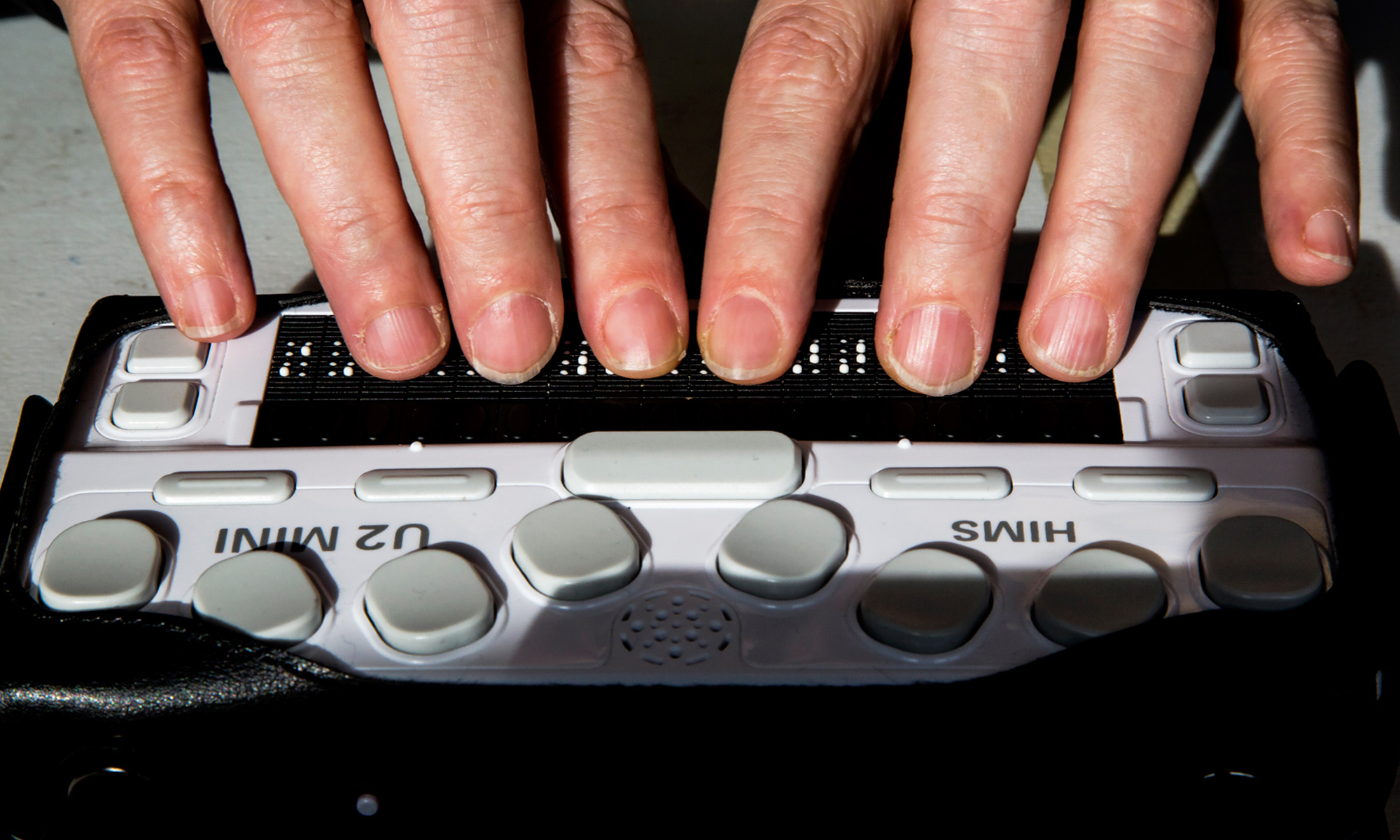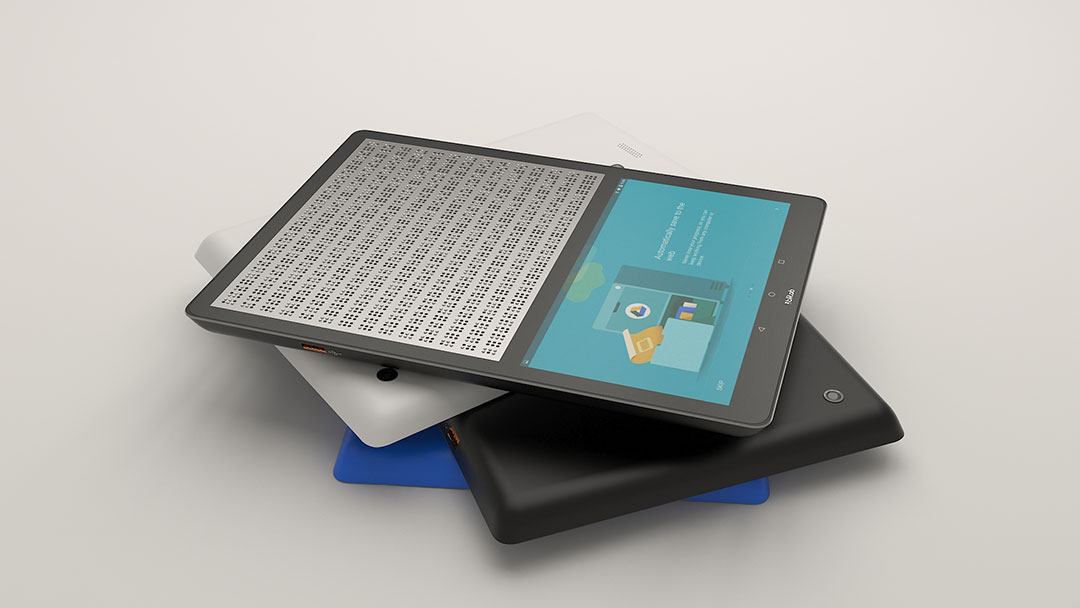AI-Powered Visual Aids: Transforming Support for the Blind
AI-Powered Visual Aids: Transforming Support for the Blind
Blog Article
Empowering Freedom With Assistive Innovation for the Blind
The combination of assistive innovation right into the lives of people with aesthetic disabilities stands for a substantial development in advertising independence and self-sufficiency. From innovative display viewers to advanced smart walking canes, these devices not only improve daily navigation and communication however likewise encourage customers to involve meaningfully in various aspects of life. As we explore the myriad advantages and real-world applications of these innovations, it comes to be important to analyze the hidden aspects that add to their efficiency and the capacity for future advancements in this essential area.
Review of Assistive Modern Technology

The development of assistive innovation is grounded in principles of inclusivity and empowerment. Advancements in software application, equipment, and sensory improvements supply customers with alternatives customized to their certain requirements. From display visitors that convert message to speech, to responsive tools that share info via touch, these devices change the method individuals engage with their environments.
In addition to functional applications, assistive modern technology cultivates greater social inclusion and involvement in numerous sectors, consisting of education and employment (OCR devices for the blind). As r & d proceed to evolve, the possibility for assistive technology to even more enhance the lives of visually damaged people remains encouraging, leading the way for an extra equitable culture where every person can prosper
Types of Assistive Instruments
A selection of assistive gadgets have actually arised to support people with visual disabilities, each designed to meet certain requirements and enhance day-to-day functioning. These tools vary from low-tech services to sophisticated developments, supplying diverse options for users.
Low-tech gadgets include magnifiers and large-print products that assist in analysis and writing. Braille tools, such as Braille styluses and slates, allow responsive analysis and interaction. Orientation and wheelchair help, like white walking sticks, assist users navigate their setting safely.
On the greater end of the spectrum, electronic magnifying systems and screen readers offer significant support. Digital magnifiers permit individuals to expand text and photos on displays, while display readers convert digital web content into synthesized speech, promoting accessibility to info on computer systems and mobile phones.
Mobile phone applications likewise play a crucial function, providing attributes like text recognition and navigating support. Wearable technology, such as clever glasses equipped with augmented truth, is becoming a promising device to improve situational awareness.
Benefits of Assistive Technology
The combination of assistive innovation considerably boosts the quality of life for individuals with visual disabilities. These modern technologies encourage customers by promoting independence, allowing them to browse their environments better and do day-to-day tasks with higher ease. As an example, display visitors and magnification software enable individuals to accessibility electronic information, fostering educational and professional opportunities that may have formerly been out of reach.
In addition, assistive devices such as smart walking canes and general practitioners applications provide real-time navigation aid, improving mobility and safety and security. This enhanced autonomy not just boosts self-confidence yet also encourages social interaction, permitting individuals to participate more totally in their areas.
Assistive modern technology also assists in interaction, assisting customers attach with others through voice acknowledgment and text-to-speech applications. This ability is vital for keeping partnerships and accessing critical info.
Furthermore, the modification alternatives readily available with several assistive modern technologies guarantee that individuals can you could try here tailor tools to their particular needs, additionally improving use and efficiency. In general, the benefits of assistive technology for people with aesthetic impairments are extensive, promoting a much more comprehensive culture where everybody can pursue their ambitions and goals.
Instance Studies and Success Stories
Highlighting the transformative effect of assistive technology, various case researches illustrate special info how individuals with aesthetic impairments have actually successfully integrated these tools into their every day lives. One compelling instance involves an university trainee that used display reading software to browse scholastic materials and on-line sources properly. This modern technology not only facilitated her education however likewise improved her confidence in joining conversations and team tasks.
An additional study features a specialist that uses a mobile phone application developed for navigating and things acknowledgment. By utilizing this application, he has actually restored autonomy in both his individual and job environments, enabling him to commute independently and engage with associates better.
Furthermore, a senior citizen shared her experience with braille e-readers, which enabled her to access a substantial array of literature and stay attached with her area through publication clubs.
These success stories emphasize the essential function of assistive technology in cultivating self-reliance, improving quality of life, and advertising social combination for people with aesthetic problems (Mobility aids for visually impaired users). By accepting these innovative devices, individuals can get over obstacles and take opportunities that add to their personal and professional fulfillment
Future Patterns in Assistive Innovation
Development in assistive technology is poised to redefine the landscape of assistance for individuals with visual problems. Emerging fads stress the assimilation of fabricated knowledge (AI) and equipment discovering, which improve the functionality of gadgets see this that assist with navigating and information access. AI-driven applications are currently qualified of translating aesthetic data in real-time, allowing customers to engage with their atmosphere more individually.
Additionally, the growth of wearable modern technology is advancing quickly. Smart glasses geared up with enhanced fact (AR) can give audio summaries of surroundings, changing just how customers communicate with public spaces. These devices not just advertise autonomy yet likewise foster social incorporation.
Furthermore, the Internet of Points (IoT) is making homes smarter, enabling seamless connection in between daily devices and assistive devices. This connectivity equips customers by making it possible for automated actions and voice-activated controls customized to individual needs.
Final Thought
Finally, assistive innovation plays a critical role in equipping individuals with aesthetic disabilities by enhancing their self-reliance and engagement with their surroundings. The varied range of applications and devices readily available not just promotes navigating and interaction but additionally advertises social assimilation and chances for specialist and personal development. As advancements continue in this area, the capacity for enhancing the top quality of life for those with aesthetic problems will broaden, fostering higher autonomy and empowerment.

Report this page